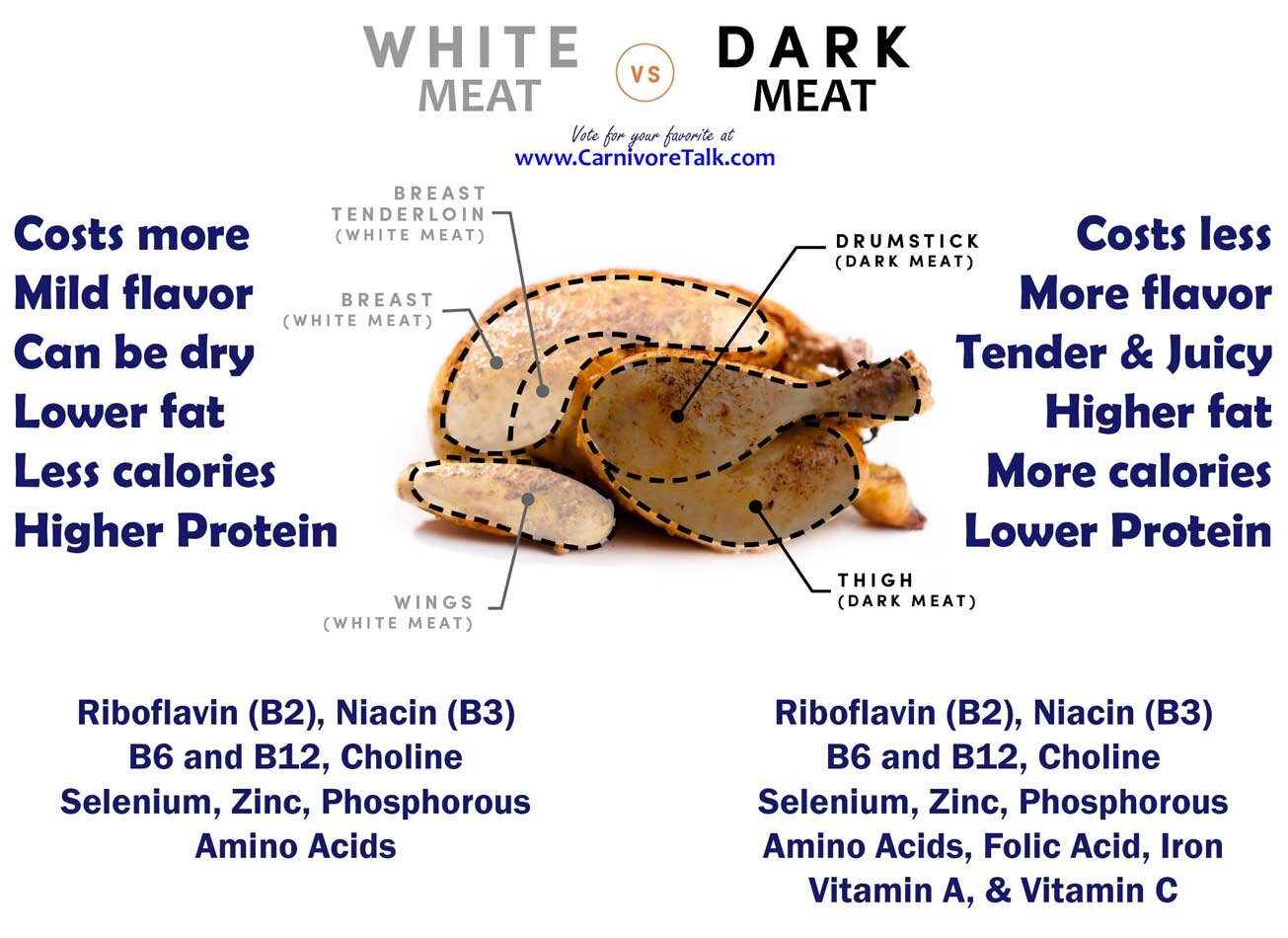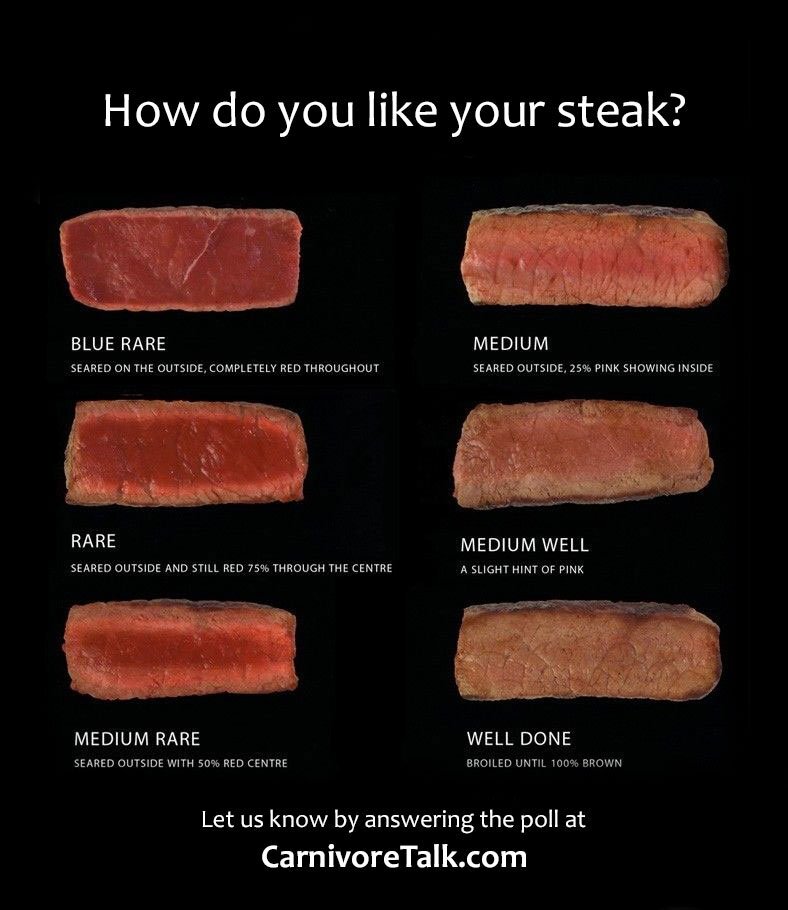Welcome to our Carnivore / Ketovore / Keto Online Community!
Welcome to Carnivore Talk! An online community of people who have discovered the benefits of an carnviore-centric ketogenic diet with the goal of losing weight, optimizing their health, and supporting and encouraging one another. We warmly welcome you! [Read More]
- Replies 2
- Views 997
- Created
- Last Reply
Popular Days
Most Popular Posts
-
This is a fantastic read, thank you! I know very few vegetarians and they all seem to have man-boobs. They also eat a LOT of soy. I am convinced that the decline in fertility is directly related to
-
And from my research you would be absolutely correct. There’s a reason for the term “Soy Boys”. It’s not a manly compliment. Sent from my iPhone using Tapatalk










comment_1803https://www.thecarnivoredietcoach.com/plant-toxins.html
PLANT TOXINS & HOW THEY HARM US
The rise in veganism and vegetarianism has left many people believing that a plant-based diet is the healthiest option. In reality, however, plants don't want to be eaten so, because they can't run or bite, they've developed a variety of potentially harmful toxins to ward off predators.
Whilst some plants are capable of causing death within minutes, others have a slower and less pronounced effect, mainly due to years of selective. Despite this, they still have the potential to cause long-term health problems when consumed regularly and in the context of a dysfunctional digestive system.
5 A DAY | PLANT TOXINS | LECTINS | PHYTATES | SOY | OXALATES | GLYCOALKALOIDS | SULFORAPHANES | PHYTOCHEMICALS| RECIPES, & MEAL PLANS
WHERE DID THE GOVERNMENT RECOMMENDATIONS OF 5-A-DAY COME FROM?
Did you know that the most widely known nutritional advice of eating 5 servings of fruits and vegetables per day is completely made up and isn't based on any sound science or nutritional research?
It came from a 1991 meeting in California. Members of that meeting include the American National Cancer Institute (ANCI), the Produce for Better Health Foundation and 25 major fruit and vegetable companies (1).
There wasn't a single scientist or nutritionist at the meeting and the main agenda was logistics, not health. How to get more fruit and veg to the consumer, not how to make people healthier.
In that same year, the ANCI began The European Prospective Investigation into Cancer study and 30 years later they published their results:
Picture
Just in case you're reading this on your phone...
The possibility that fruit and vegetables may help to reduce the risk of cancer has been studied for over 30 years, but no protective effects have been firmly established"
In all of their 30 years of research, they found no protective effects from consuming fruits and vegetables. Their announcement did not reach mainstream media.
WHY PUSH A PLANT BASED DIET?
Why would institutions at a government level push a plant based diet if there's no evidence to suggest it's healthy? That doesn't make sense?
A possible explanation: Because plant foods make money. Lot's of money:
Fertilizers to nourish the ground
Industry valued at approximately $208 billion (2)
Pesticides to keep bugs off
Industry valued at approximately $233 billion (3)
Huge machines to harvest
Industry valued at approximately $98 billion (4)
Agricultural labour
Industry valued at approximately $2.4 trillion (5)
Insane amounts of plastic to package
Industry valued at approximately $496 billion (6)
Electricity for almost every aspect of the system
The largest contributor to global emissions (7)
Healthcare to treat sick people
Industry valued at approximately $4.1 trillion (8)
Whereas food from local ruminant animals require:
Fields for them to feed
Zero pesticides or fertilisers
No huge machinery
Very little factory and processing units
Very small transport systems
Way less energy
Even less healthcare
Believe me when I say that I don't think the government is secretly conversing and organizing a plan to make everyone spend more money and make everyone sick. Simply, we have so much invested in the plant agricultural business, it is almost impossible to turn back now.
BUT HOW WILL WE FEED EVERYONE?
Some may argue that we need plant foods because we can't raise enough animals to feed everyone. Well, if you look at the math, that assumption doesn't hold up.
The average human can live off of just one cow per year. The average adult bull weighs approximately 2,400 pounds, and the average adult cow weighs approximately 1,600 pounds (9).
It is estimated that about 60-70% of the cow is used for meat. If we take the average weight of 2,000 pounds, and take the minimum yield, that is about 1,200 pounds of beef. There is about 1,100 calories in a pound of beef. Thus, one single cow has approximately 1.32 million calories! (not including organs). Just the beef can provide you with 3,600 calories a day.
If we eat the entire cow, organs included, we meet every single nutritional requirement a human needs, and not a single anti-nutrient to worry about. Coincidence? It might be time to put in a little more research into this whole carnivore diet.
THE SECRET LIFE OF PLANTS
Animals have developed fantastic physical characteristics to defend themselves. Some animals have claws, horns, or sharp teeth to defend themselves. Others rely on their ability to maneuver through their environment to escape from danger.
Plants… just sit there. Since plants are so easy to capture they've developed a different way to protect themselves. Chemical warfare.
Picture
Have you ever brushed up against poison ivy and suddenly your skin swells up and gets all itchy? Poison ivy produces a chemical called urushiol that is present on the external portions of poison ivy.
When humans come in contact with urushiol it rapidly absorbs into our skin, and causes the immune system to release inflammatory molecules to exonerate the urushiol. That's when you start to swell and turn red. The inflammation evokes mediators to be released to break down the urushiol and get it out of your body as soon as possible! (10)
What's this got to do with the fruits and vegetables that we eat? We don't eat poison ivy
and other plants because of their toxic effects are large and oftentimes even deadly. However, all plants have defense chemicals and poisons just like poison ivy. Humans have found the plants whose toxic effects are not as apparent, and have decided that these plants are edible and safe for consumption, probably during times of famine.
The plant foods we consume often contain enough chemicals to kill insects and other small animals, but not enough to kill a human. That doesn't mean they are not having deleterious effects within our body, we just can't see it.
The result? A cornucopia of chemicals, proteins, and acids which gradually damages our sensitive digestive system, upset our delicate hormonal balance, and can prevent the release of critical neurotransmitters, altering our cognitive and physical abilities.
HEALTH DANGERS OF LECTINS
You’ll find lectins in most plants, although they are particularly high in volume in potatoes, beans, tomatoes, eggplants, lentils, chickpeas, peanuts, goji berries, chilies and bananas.
Picture
Lectins are a type of protein, but not necessarily the kind you associated with muscle gain and fat loss. They're used by plants to keep insects away.
The most noticeable effect on lectins may occur when they’re eaten raw, as their impact on the digestive system can cause an upset stomach. As many lectin-rich vegetables are eaten raw, particularly in salads, this can lead to further complications.
Lectins can bind to cells that line the gut, and deteriorate them. We are then left with small gaps in our intestinal tract that foods, specifically lectins themselves, can permeate out of and get into our bloodstream. This is often referred to as leaky gut, and causes unnecessary inflammation and histamine release (13).
Lectins are capable of binding to the insulin receptors on our cells and mimic the action of insulin (14). When lectins are administered, studies demonstrate a transient decrease in lipolysis, or fat burning, and increased storage of glucose into fat cells. These actions were actually shown to be even more intense than what the actual insulin molecules would produce!
Lectins also have the ability to ascend, through the vagus nerve, and attach to different receptors within the brain, inducing very dangerous psychological disorders such as Parkinson's disease (15).
Lectins have the capability to get into the brain and destroy neural connections, leading to abnormal and dangerous neuroplasticity that alters one's function, and causes degeneration and inflammation of a healthy brain. Lectin removal has been demonstrated to help eradicate migraines, parkinsonian like symptoms, and other mental disorders that are described as autoimmune disorders.
Red kidney beans are just one example of the dangers of lectins. The U.S. FDA warns that consuming just four raw or undercooked red kidney beans is enough to cause severe illness, whilst excess consumption can have serious health risks.
Whilst cooking lectin-rich foods at a high temperature can minimize the risk they pose, this may not be enough to prevent unwanted side effects from occurring. As lectins are believed to be ‘antinutrients’, they can affect the body’s absorption of key vitamins and minerals, which can lead to a whole host of health problems.
HEALTH DANGERS OF PHYTIC ACID
Phytates are typically found in the highest concentration in both beans and legumes. Cows and other herbivores have the capability to consume and digest the large amounts of phosphorus contained in phytates due to the presence of the phytase enzyme in their digestive system.
Humans on the other hand do not have the phytase enzymes required to process phytates. As a result, unprocessed phytates chelate, or bind, zinc, magnesium, calcium, potassium, copper, iron, and manganese, all of which are essential minerals (17). Humans do not have the capability to absorb chelated nutrients, therefore the ingestion of phytates leads to a net negative retention in essential nutrients.
If humans had the requirement for foods that contain phytates (beans and legumes) one would expect that selective pressure would not have excluded the phytase enzyme from the human digestive systems as we evolved from Sahelanthropus, who consumed a large quantity of nuts and seeds.
Various health issues and symptoms can arise from low levels of these essential minerals, including:
Muscle cramps
Hallucinations
Depression
Brittle hair and nails
Weak bones
Tingling in the hands and feet
Memory loss
Confusion
Muscle twitches
Fatigue
Lightheadedness
Dizziness
Shortness of breath
Irregular heartbeat
Asthma
Osteoporosis
High blood pressure
Hair loss
Diarrhea
Skin lesions
Impaired immune function
Pale skin
Weakness
Chest pain
Headaches
With so many health issues associated with a high intake of phytic acid, it’s easy to see why so many people choose a diet that limits consumption or avoids it completely.
HEALTH DANGERS OF SOY
Many people who avoid dairy products replace them with soy alternatives. However, there are concerns over the impact soy can have on your health, particularly on hormone production and regulation.
Harvard School of Public Health in 2008 found that sperm count declined for men who ate an average of half a serving of soy foods a day, with the effect being particularly prevalent in participants who were overweight and obese (18).
Picture
Soy is a phytoestrogen, meaning it has a very similar structure to actual estrogen. Soy binds to the estrogen receptor, similar to how lectin binds to insulin, and causes the cell to exude estrogenic effects. Well, what does estrogen do? In both men and women, estrogen increases growth of the breasts. High estrogen is highly correlated with breast cancer and gynecomastia ( abnormal breast growth in men), insulin resistance, and dysregulation of other hormones such as testosterone (19, 20).
Soy can impair thyroid function, causing hypothyroidism and hyperthyroidism dependent upon one's predisposition of thyroid function (21).
Soy is also extremely harmful to the gut and thyroid, which is not related to its estrogenic capabilities, rather the plant chemicals found in soy. Soybeans, which soy is derived from, contains high levels of oxalates, lectins, phytic acid, and tannins.
Finally soy contains trypsin inhibitors. Trypsin is an enzyme produced by the pancreas pivotal in the digestion of protein. Trypsin inhibition leads to lower protein digestibility, and impairs digestive function. Moreover, trypsin inhibitors can damage the pancreas (22, 23).
HEALTH DANGERS OF OXALATES
Most plants contain oxalates, so you’ll find them hard to avoid if you consume any type of fruit or vegetables. However, the following foods are particularly high in oxalates:
Cashew nuts
Spinach
Almonds
Miso
Baked potatoes with skin
Rhubarb
Beets
Picture
Oxalates are also found in a majority of plants, but they are the most abundant in leafy plants, such as spinach, chard, and kale. Oxalic acid is the component within oxalates that seems to have the most detrimental anti nutrient effects.
Oxalic acid has a strong affinity to bind to nutrients, such as sodium, potassium, and calcium making them difficult for the body to absorb and utilize. Oxalic acid bound to these minerals forms an oxalate salt which can often crystalize and build up within the kidneys, leading to the formation of kidney stones. Outside of the kidneys, the structure of oxalates is very thin and sharp. (24 )
Due to oxalates, and other plant chemicals, nutrients contained in plants are much less bioavailable. For example, 100 grams of raw spinach contains 15% or the RDI of iron, and 34% of the RDI of calcium. However, The absorption of iron in spinach is about 12%, and the absorption of calcium is about 5% (25, 26).
When oxalates do not bind to minerals, their concentration begins to build up in the bloodstream, and deposit in bodily tissues, most commonly the kidney. Over 80% of kidney stones are a result of calcium oxalate buildup in the kidney.
Oxalates also can deposit in the brain, eyes, muscles and joints. Due to the sharp needle-like structure of oxalates, oxalate crystals can physically damage tissue, and damage the composition of the cell (27).
Many of the oxalates you consume will bind to calcium within the digestive system. Those that don’t, however, travel to the kidneys, where they can contribute to the development of kidney stones. In fact, it’s estimated that at least 8 out of 10 kidney stones consist of oxalates (28).
HEALTH DANGERS OF GLYCOALKALOIDS
Defined as neurotoxin enzyme inhibitors, glycoalkaloids can have numerous unwanted effects on the body. In high quantities, glycoalkaloids can impact the nervous system and even lead to convulsions, paralysis, respiratory arrest and even death.
Picture
Potatoes are notably high in glycoalkaloids, although they are present in a variety of other plant foods, including tomatoes, peppers, and eggplants. Potatoes are specifically abundant in solanine, which can toxically affect women's placental cells and inhibit nutrition of a growing fetus (29).
The U.S. has even taken steps to regulate how much can be present in the potatoes which are sold for consumption (30).
HEALTH DANGERS OF SULFORAPHANE
If you eat plant foods, chances are you’re going to consume cruciferous vegetables on a regular basis. Kale, cauliflower, broccoli, radishes, Brussel sprouts, and arugula are all examples, although there are many more.
Picture
Although most people assume that cruciferous vegetables are good for you, they contain numerous chemicals that can harm the body. Sulforaphane is just one of the molecules contained within these vegetables, but it’s enough to cause cell death when consumed.
Sulforaphane is so reactive that plants cannot store it as sulforaphane, rather they contain a precursor called glucoraphanin, and an enzyme called myorasonin that creates sulforaphane inside of the organism that eats it (32).
Because of its toxicity, the body immediately tries to get rid of sulforaphane by activating what is referred to as the NRF2 pathway. This pathway increases glutathione production, which is a very important endogenous antioxidant. However, this depleats one's glutathione status thereafter, reducing our ability to combat other harmful chemicals.
Sulforaphane inhibits iodine uptake by the thyroid, which is pivotal for the production of thyroid hormones (T3 and T4) and triggers goiter (33).
HEALTH DANGERS OF PHYTOCHEMICALS
Fruits are known for their high sugar content, which can be extremely harmful. Despite occurring naturally, an excess of sugar can cause blood sugar problems, weight gain, tooth decay, and heart issues.
In addition to this, fruits contain a high number of phytochemicals, such as tannins, photosensitizers, salicylates, and flavonoids, as well as cyanogenic glycosides, which create cyanide when mixed with an activating enzyme that just so happens to occur naturally in our bodies. Associated with a wide range of symptoms, consuming excess amounts can result in:
Thyroid dysfunction
Asthma-life symptoms
Allergies
Hives
Stomach upset
Headaches
Vision problems
Anxiety
Liver toxicity
Kidney damage
Malabsorption
Malnutrition
Cyanogenic glycosides also inhibit proper growth in children as vital proteins used for growth are instead used to rid the body of cyanide (34).
Tannins are another abundant Phytochemical.
The most abundant sources of tannins include grapes, apples, berries, nuts, grains, and legumes. Tannins have consistently been shown to decrease protein digestion, shown by indigestion and excess fecal nitrogen, portraying impaired protein digestion (35).
I THOUGHT PLANTS WERE FULL OF NUTRITION?
There is no essential nutrient in plant products that cannot be obtained in an animal product. However, there are multiple essential nutrients that can only be obtained from animal products.
Additionally, all of the nutrients from animal products are present in the most bio available and most efficacious forms.
Vitamin B12: Plants do not have the need for vitamin B12, therefore vitamin B12 is not present within any plant products. Cows have the ability to synthesize cobalt using the bacteria present in their stomach (36). 100 grams of beef liver has over 3,000 of the RDI of B12 and 100 grams of muscle meat has 250% of the RDI.
Vitamin A: Vitamin A is found in two different forms: preformed or precursor. Preformed vitamin A is the retinol found in animal products such as meat and fish. The precursor form of Vitamin A carotenoids, or beta carotene, which are found in vegetable products such as carrots and sweet potatoes. The conversion rate of the precursor Vitamin A to the usable Vitamin A is about 8% (37). With that being said, extreme quantities of beta carotene have been demonstrated to cause hypercarotenemia, causing the skin to turn a yellow-orange color (38). It is also very important to note that vitamin A is fat soluble, thus it requires fat for absorption, which is a macronutrient not found in the majority of plant products to any reasonable degree.
Iron: There are also 2 forms of Iron: Heme iron and non heme Iron. Iron can only be absorbed when it is in the heme form, which is only found in meat products. Non heme iron found in plants and supplements must be reduced down to heme iron in the intestines. It is estimated that between
Vitamin D3: Plant products do not contain Vitamin D3, rather they contain Vitamin D2. Studies on these two forms of Vitamin D conclude “D3 is approximately 87% more potent in raising and maintaining serum 25(OH)D concentrations and produces 2- to 3-fold greater storage of vitamin D than does equimolar D2.” The measured marker is the most indicative measure of absorbed and usable vitamin D3 (40).
Plants also are far inferior to animals in protein, which is one of the two essential macronutrients. Simply, animal products are considered complete proteins, in which they contain all of the 9 essential amino acids that can only be obtained from food.
Conversely, plants are often incomplete proteins, and do not provide the necessary amino acids for protein synthesis.
The PDCAAS is a 0-1 scale that assesses a protein's ability to meet the essential amino acid requirements, based on the actual absorption of different protein sources, not just the theoretical yield.
Picture
The PDCAAS displays that eggs and chicken both receive a perfect score, and the highest non concentrated vegetables are peas, receiving a score of 0.60 (41).
THE BOTTOM LINE
There's currently very little evidence to support the idea that fruits, seeds and vegetables are good for you and a lot of evidence to suggest they're not.
The current dietary guidelines for plant foods weren't created to optimise human health, they were created by fruit and vegetable industry giants to persuade the public into consuming more of them.
Almost all autoimmune conditions are associated with plant foods in some way. Some people tolerate plants extremely well, other people don't. Especially those with a leaky gut. If you don't tolerate plants well, it might be worth your time to explore the idea of a life without them.
Sent from my iPhone using Tapatalk